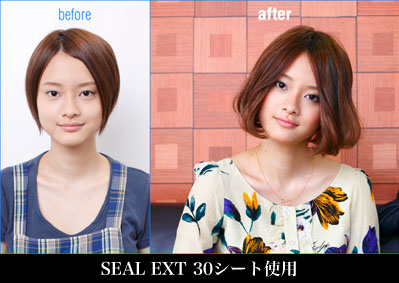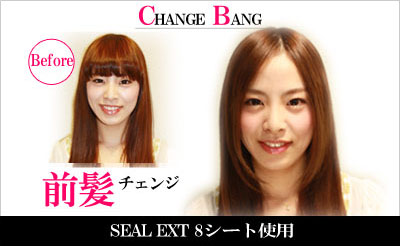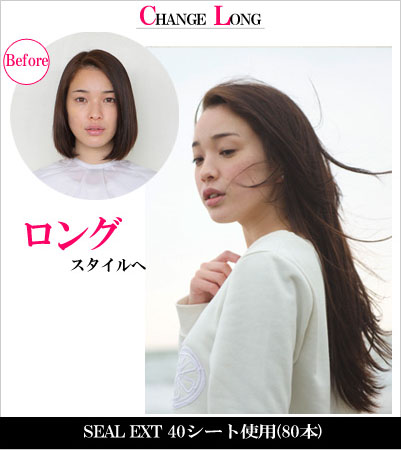There’s something immensely entertaining about celebrity hair. One minute, a celebrity is photographed at the Oscars with a signature pixie cut. Two weeks later, she suddenly has a bob. The next moment, you start seeing pictures of the same celebrity with long, flowing locks.
Thanks to hair extensions, you don’t have to be genetically blessed to have long luscious locks. Rather than sit back and wait for your hair to grow, you can make like an A-lister and cheat your way to long strands.
But getting hair extensions can often be a confusing process. Where do we even begin?
Before you rush to get your hair extensions, we share a few bits of info with you in our quick guide to hair extensions!
1. There are different types of hair extensions — Do your research!
As wonderfully simple as it may sound, it is not recommended for you to just go to the salon and declare that you want a full head of hair. Do a little research and know what type of extensions you’ll be adding to get the best results!
Finding the right extension method will depend on your budget, preference, and hair type. New methods of installing extensions crop up practically each month, but fusion, tape-in, woven-in, and clip-in hair extensions are the most popular options for ladies looking to lengthen their locks or pump up the volume.
Important note: There’s a risk of damage with every kind of semi-permanent extension method, which makes sense when you think about the fact that you’re gluing, taping, and sewing things in place. However with proper maintenance, the methods below can be used relatively safely.
If you have wavy, medium-textured hair: Fusion hair extensions
In this process, several strands of hair are bonded together at the tip with keratin glue, then fused to your natural hair with a heating wand. This method best suits naturally thicker types, since the beads of glue that bond strands may show through fine hair. If you’re properly maintaining your extensions at home, they should last up to four months.
By the way, that’s the type of hair extensions Qiu Qiu got from CLEO Hair & Make!
Read about her experience here if you are interested!
Fusion hair extensions like this is less harmful to the hair because it is attached with Keratin glue. Therefore, it melts over many washes, making it easy to remove.
If you have straight, fine hair: Tape-in hair extensions.
This is a technique where the extensions are secured to natural hair with transparent, double-sided polyurethane tape. The tape is applied directly to the scalp and surrounds strands so there are no bumps to brush through so it lies flat on your hair and can look really natural if your hair is not that short. However, the tape can pull so some people may experience that the extensions pull your hair out quite a bit. The adhesive in the tape also tend to get looser each time you wash your hair.
On average, these will last anywhere from one to three months, depending on how quickly your hair grows.

If you have thick, coarse, or curly hair: Woven-in hair extensions.
In this process, the underside of your natural hair is braided in tiny rows, then the wefts are sewn in with thread. Think of the braids as an anchor for the wefts to latch onto. But beware: This particular type of extension tends to be thicker and heavier, so they can pull on the scalp! Some may feel that it weighs down on your head so you may get a headache for the first couple of days. The braids may also make the hair feel kind of bumpy.
These can last anywhere from four to ten weeks and if we’re not wrong, this is the type of hair extension that Milly’s use!

If you’re feeling hesitant: Clip-ins.
It may seem a little bit odd at first, but this increasingly popular option allows you to switch up your look without emptying out your wallet. In fact, with proper care, clip-in extensions can last years. Don’t leave them crumpled when you take them out because they tend to get tangled. Instead, attach them to a pants hanger once you’ve unclipped them to dry or style them. They are also great because you can remove them on days you want your natural hair back!

2. Human or synthetic hair extensions?
When it comes to purchasing hair, you get what you pay for. Price will vary greatly based on quality of the hair, as well as the desired quantity (for thickness) and length. Virgin (never-before-processed) Remy human hair is the highest quality. Synthetic hair is much cheaper and available in a range of shades, providing a cheaper alternative to human hair. However, you essentially get what you pay for. Technology is continually improving the quality of synthetic hair, but it still has yet to come close to looking and feeling like real hair, so getting it to blend in with your natural hair can be an issue.
That is why Yohei from Rubik Hair Salon took the effort to source for the highest quality Virgin Remy Hair Extensions he could find in Japan! Although pricier than your usual Milly’s, the hair extensions look and feel exactly like genuine hair (duh… because they are!) and may even feel healthier than the hair you have on you! They are after all harvested from human hair donors from Mongolia who hasn’t yet done any chemical treatments on their hair!

Before investing major dollars in your brand-new hair, make sure that both texture and colour match what’s already on your head. The best way to match texture and colour is to hold a hair sample directly against your actual hair. Don’t just look for the right shade, but also the feeling! Textures of extensions can vary greatly, depending on which country they come from. Hair is primarily European, Chinese, or Indian, but there are plenty of other options available.
CLEO Hair & Make also provides Blonde Hair Extensions (made from Real Blonde Hair!) so for Caucasian customers or those who have previously bleached their hair, these hair extensions can be a great alternative!
3. Not every stylist has experience with this, and it’s IMPORTANT to find one who does!
Before getting hair extensions at a salon, always check and see if the stylist has professional experience in hair extensions. Extensions need to be done properly to minimise damage to your own hair AND look good!

After all, you do not want to waste your money on hair extensions that eventually make you look less than glamorous!
Therefore, go to a pro who really knows how to do extensions and better yet, a hair professional who will design your overall hairstyle with the hair extensions in mind. This is not something we would recommend you to get done at the local nail salon.
We would also recommend that you go back to your stylist for maintenance at least once a month. This way, your stylist can make sure that the extensions are on properly, and if one is pulling at the hair, they’ll remove it and reapply it the proper way. They can also rotate the areas that they put the hair extensions on so it’s not the same group of hairs under stress every time.
4. Thinking of getting a keratin or smoothing treatment? Do it before you get your extensions.
What’s really cool about getting natural hair extensions is that you can style your hair with just about any product. You can even colour, straighten, and curl the extension! However, there is an important exception. If you’re going to get a hair smoothing treatment, make sure you get it done three to four weeks prior to your extensions. We’ve been told that if you do it after getting extensions, your hair will be so soft that the extensions could slip off.
5. Get your hair cut after your extensions are placed.
This is an important step in making sure your locks look as natural and pretty as possible! Good extensions should be entirely undetectable — blending your natural hair with the extension is critical. After the extensions are in, your hair should be cut dry, with layers that blend the two hair types. You can colour extensions darker (no bleaching!), but it’s best to choose a shade close to your natural colour to avoid over-processing. You can also mix and match various shades for a more natural-looking blend. As for at-home styling, good extensions should allow you to wash and wear.
6. Check with the salon for the application process before proceeding!
Different salons may have different ways of applying the hair extensions so it may be wise to check with them before proceeding!
CLEO Hair & Make, for example, carries non-coloured blonde hair extensions which cost $20/weft. After a consultation with the stylists, you can decide which colour you want the extensions to be. They will then colour the hair extensions over the next few days and invite you for a second visit to attach the extensions!
Rubik Hair Salon, on the other hand, carries pre-coloured hair extensions. So you are likely to get in and out of the salon within an hour if you are getting only a few wefts of coloured extensions! Rubik is in fact having a promotion for Haircut and 8 hair extensions for $200. Therefore, this may be a worthwhile chance to try hair extensions if its your first time!
7. At-home maintenance is important
This is key! Extension hair should be cared for just like your natural hair: gently. Dry hair completely with your fingers before using a brush to style. Use a wide-toothed comb to tame any tangles, and avoid tugging or yanking at the extensions when you come across a knot. Instead, hold hair at the root and begin detangling starting at the ends. Shampoo and condition with moisturising products designed for dry hair. After a wash, skip the hot tools as the overuse of curling irons and flat irons can shorten the shelf-life of your extensions.
You can use all of your favorite hair products, but keep oils away from the roots in order to prevent the extensions from slipping. At bedtime, put your hair in a loose braid so it doesn’t get matted or tangled while you sleep.
8. Check for damage control
The weight of extensions can put additional stress on the roots, so it’s important to match hair density to avoid unnecessary tension on your own hair. Extensions should be placed where hair is strongest, avoiding areas along the hairline or the back of the neck, where hair is the most fragile. Ensure that your extensions haven’t met their expiration date by visiting the salon at least once a month. There, your stylist can assess the condition of your hair, give you a wash and blow-dry, and perform a basic touch-up.
If extensions feel loose or your hair has grown out, it’s most likely time for a new set. But, as with anything else in beauty world, don’t overdo it! Our scalps need time to breathe. You want to keep your natural hair healthy so that someday, your natural hair can grow just as long.
Have you rocked extensions before, or are you thinking of getting some gorgeous extensions added? Leave a comment below and share your thoughts with us!




